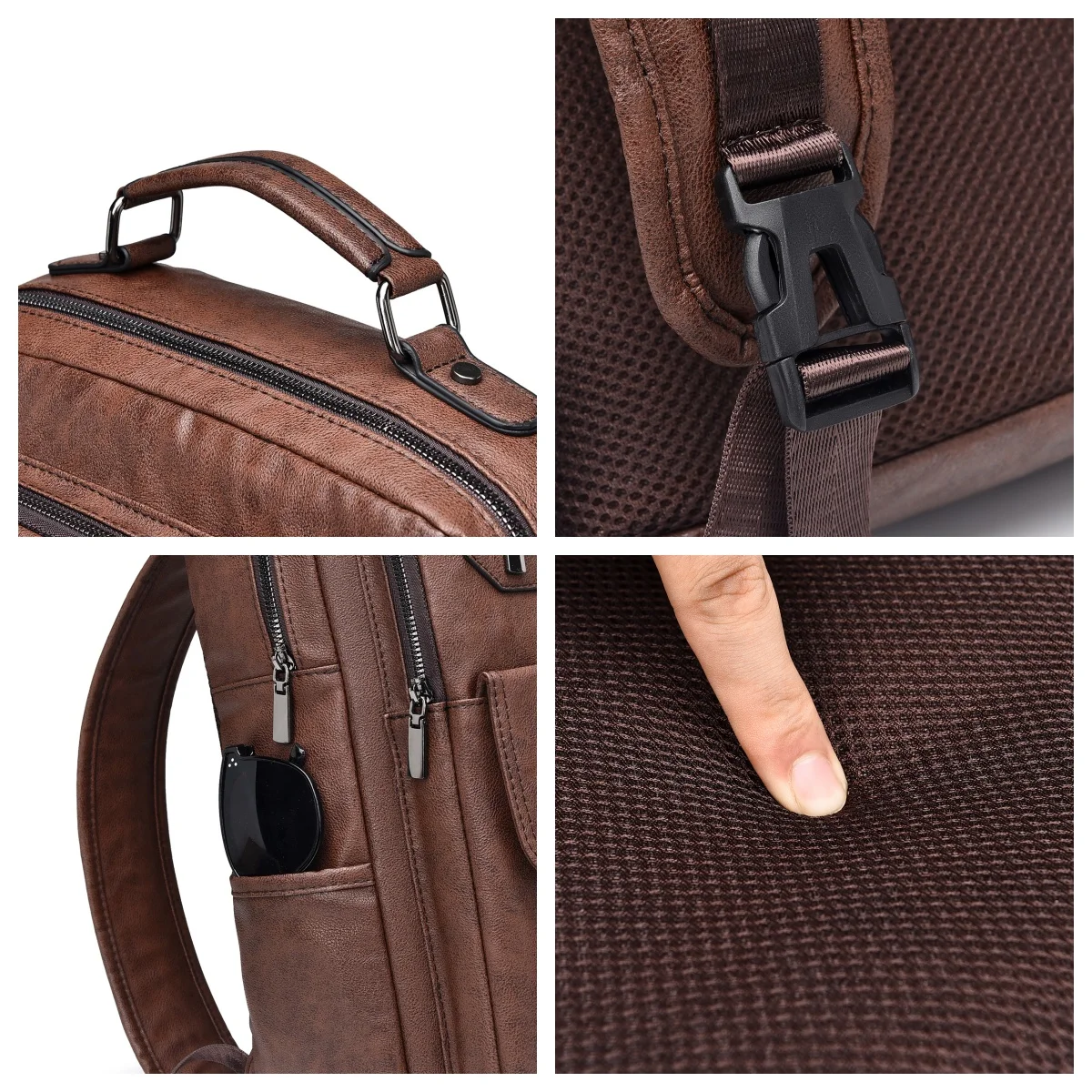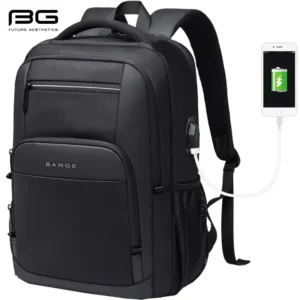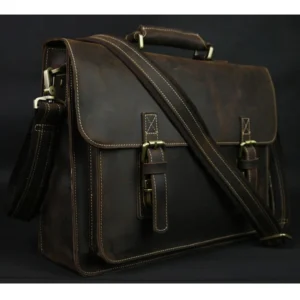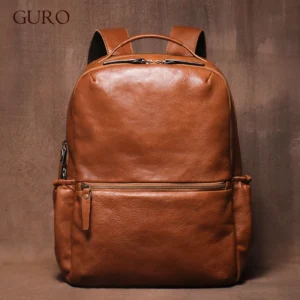Introduction: The Science Behind Strategic Backpack Packing
Packing a backpack isn’t just about making everything fit—it’s about creating a comfortable, balanced load that works with your body instead of against it. When weight isn’t distributed properly, even a moderately heavy backpack can cause unnecessary strain, lead to fatigue, create balance issues, and potentially result in injury.
Strategic packing makes a significant difference in how a backpack feels on your body. A well-packed 30-pound backpack can actually feel lighter and more comfortable than a poorly packed 20-pound bag. The key is understanding how weight distribution affects your center of gravity and overall comfort.
Research in biomechanics shows that improper load placement can dramatically alter posture, increase muscle strain, and reduce stability—all factors that can turn an enjoyable hiking experience or daily commute into an uncomfortable ordeal.
In this guide, you’ll learn:
– The fundamental principle of backpack weight distribution
– How to use a zone system for optimal packing
– Specific placement recommendations for different items
– How to adjust for various activities and terrains
Understanding proper leather conditioning and waterproofing techniques for your backpack goes hand-in-hand with knowing how to pack it efficiently, as proper weight distribution prevents unnecessary strain on materials.
The Core Principle: Heavy Items Close to Your Back
The most important rule of backpack packing is straightforward: place your heaviest items in the middle of your backpack, directly against your back. More specifically, the optimal position is between your shoulder blades and just above your hips.
This placement works with your body’s biomechanics in several critical ways:
- It aligns the pack’s center of gravity with your body’s natural center of gravity
- It directs weight onto your hips (the strongest part of your body for carrying weight)
- It prevents the backward pulling sensation that causes extra strain
- It creates a stable load that moves with you rather than against you
When heavy items are positioned this way, your body can maintain its natural posture more easily. The weight becomes an extension of your own center of mass rather than a force pulling you off balance.
This principle applies universally—whether you’re carrying a hiking backpack into the wilderness, a laptop bag to the office, or a school backpack across campus. The closer the heaviest items are to your center of gravity, the more comfortable and balanced your load will feel.
Proper weight distribution also helps maintain the condition of leather backpacks by preventing uneven stress on seams and materials.
Understanding the Backpack Zones: A Complete Packing System
To apply the core principle effectively, think of your backpack as having distinct “zones.” This systematic approach to packing ensures that items are placed where they contribute most to comfort and stability.
The four key zones of any backpack are:
- Bottom Zone: The foundation of your pack, furthest from your shoulders
- Core/Middle Zone: The “golden zone” against your back, between shoulder blades and hips
- Top Zone: The upper portion of your pack, closest to your head and shoulders
- External/Accessory Pockets: All additional storage areas outside the main compartment
This zoning system isn’t just theoretical—it’s used by experienced hikers, military personnel, and professional pack designers because it works. Each zone serves a specific purpose in creating a balanced, comfortable load.
Understanding how to use these zones effectively is particularly important for commuters who carry leather backpacks, as it helps preserve both the bag and your comfort during daily use.
Bottom Zone: Creating a Stable Foundation
The bottom zone of your backpack serves as the foundation for everything above it. This area is ideal for lightweight but bulky items that you won’t need until reaching your destination or setting up camp.
Items in this zone should be:
– Light to moderately weighted
– Bulky or compressible
– Not needed until destination
– Able to create a stable base
Ideal items for the bottom zone include:
– Sleeping bag (compressed)
– Sleep clothes or extra layers
– Inflatable sleeping pad
– Camp shoes or sandals
– Bulky but lightweight items
This zone works best when filled with items that can create a solid, even foundation while adding minimal weight to the bottom of your pack. This prevents the “sagging” feeling that can occur when heavier items are placed too low.
Learning to pack efficiently with limited space complements proper weight distribution techniques, allowing you to make the most of every cubic inch in your backpack.
Core/Middle Zone: The “Golden Zone” for Heavy Items
The core zone is the most critical area for weight distribution. This is where your heaviest items should be placed—centered in the middle of the pack and pressed firmly against your back. Ideally, these items should sit between your shoulder blades and just above your hips.
This strategic placement provides several key benefits:
– Transfers weight directly to your hips through your frame
– Stabilizes your center of gravity
– Reduces shoulder strain significantly
– Minimizes backward pull on your shoulders
The heaviest items in a typical pack include:
– Water (hydration reservoir or bottles) – position these closest to your back
– Main food supply
– Cooking equipment (stove, fuel, pot)
– Tent body and poles
– Bear canister (if used)
These items typically constitute 60-70% of your total pack weight, which is why their placement is so crucial. When placing multiple heavy items in this zone, try to arrange them so the weight is balanced from left to right while keeping the heaviest pieces closest to your back.
Our leather travel backpacks are designed with this weight distribution principle in mind, featuring internal organization that facilitates proper placement of heavier items.
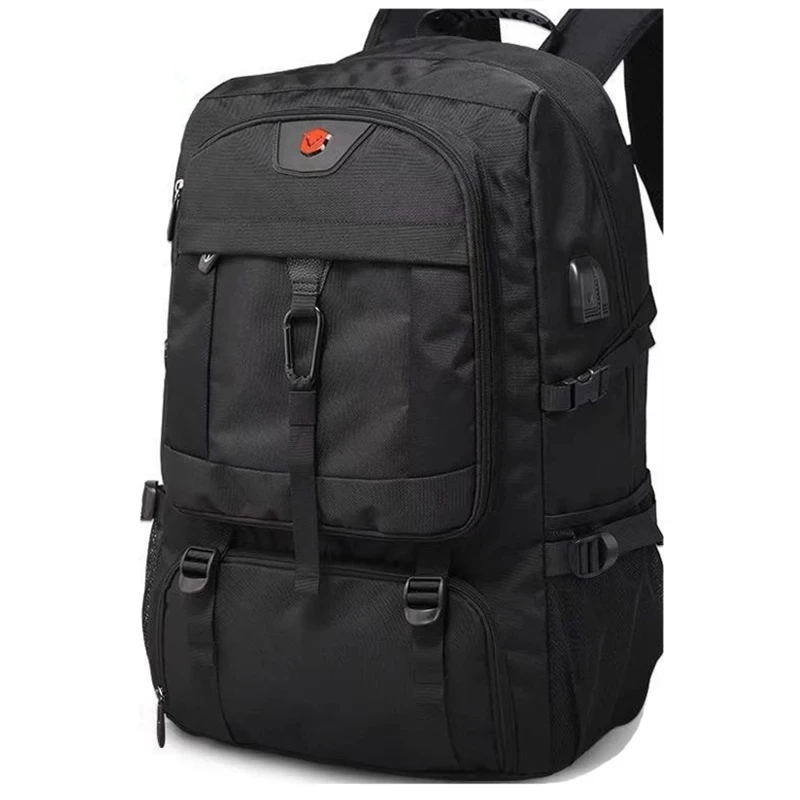
Top Zone: Balancing Weight with Accessibility
The top zone of your backpack should house items that are:
– Medium to light in weight
– Frequently accessed during your journey
– Quick to grab without unpacking everything else
This area balances two competing needs: keeping heavier items close to your center of gravity while allowing easy access to essentials throughout the day.
Ideal items for the top zone include:
– Rain gear or weather protection
– Insulated jacket or mid-layers
– First aid kit
– Water filtration system
– Daily snacks or lunch
– Navigation tools
– Toilet kit or hygiene items
The top zone works best when it contains lighter items that you might need throughout the day. This allows you to quickly access essentials without disrupting your carefully packed heavy core items.
For those carrying more equipment, large leather backpacks offer expanded top zones while maintaining proper weight distribution principles.
External Pockets and Attachments: Strategic Use of Outer Storage
External storage areas provide quick access to frequently used items while helping to distribute weight and bulk. However, these areas should be used strategically to avoid creating imbalance or strain.
Hip Belt Pockets:
These small pockets sit at your waist and are perfect for the smallest, lightest items you need immediate access to:
– Snacks
– Smartphone
– Lip balm
– Compass or small tools
Side Pockets:
Typically mesh or stretchy pockets on either side of the pack:
– Water bottles
– Trekking poles when not in use
– Small items that need easy access
Lid/Brain Compartment:
The top pocket or “brain” of many backpacks:
– Headlamp
– Maps
– Wallet and keys
– Sunglasses
– Other small essentials
Front Mesh/Shove-it Pocket:
The stretchy pocket on the outside face of many packs:
– Wet rainfly
– Light jacket
– Trail map
– Items that need to dry
A word of caution: while external storage is convenient, overloading these areas can create imbalance and strain. The bulk of your weight should still be carried in the core zone.
Our men’s leather travel backpacks feature thoughtfully designed external storage that complements proper weight distribution principles.
Adjusting Your Packing Strategy for Different Activities
While the core principle remains the same, subtle adjustments to weight placement can optimize your pack for different activities and terrains.
Flat Terrain/Easy Hiking:
– Standard weight distribution works well
– Can position heavy items slightly higher in the core zone
– Focus on left-to-right balance for long-distance comfort
Technical Terrain/Scrambling/Climbing:
– Position heavy items slightly lower for a lower center of gravity
– Ensure all items are secured tightly to prevent shifting
– Minimize external attachments that could catch or throw off balance
Urban Commuting/School Use:
– Place laptop and books against back panel
– Distribute weight evenly to prevent shoulder strain
– Consider using compression straps to keep load close to body
Travel with Rolling Luggage:
– Place heaviest items at the bottom (wheel end) of backpack
– Ensure weight is balanced side-to-side for comfort when carrying
– Secure items to prevent shifting when the pack is horizontal
These adjustments help you maintain stability and comfort whether you’re navigating city streets or mountain trails.
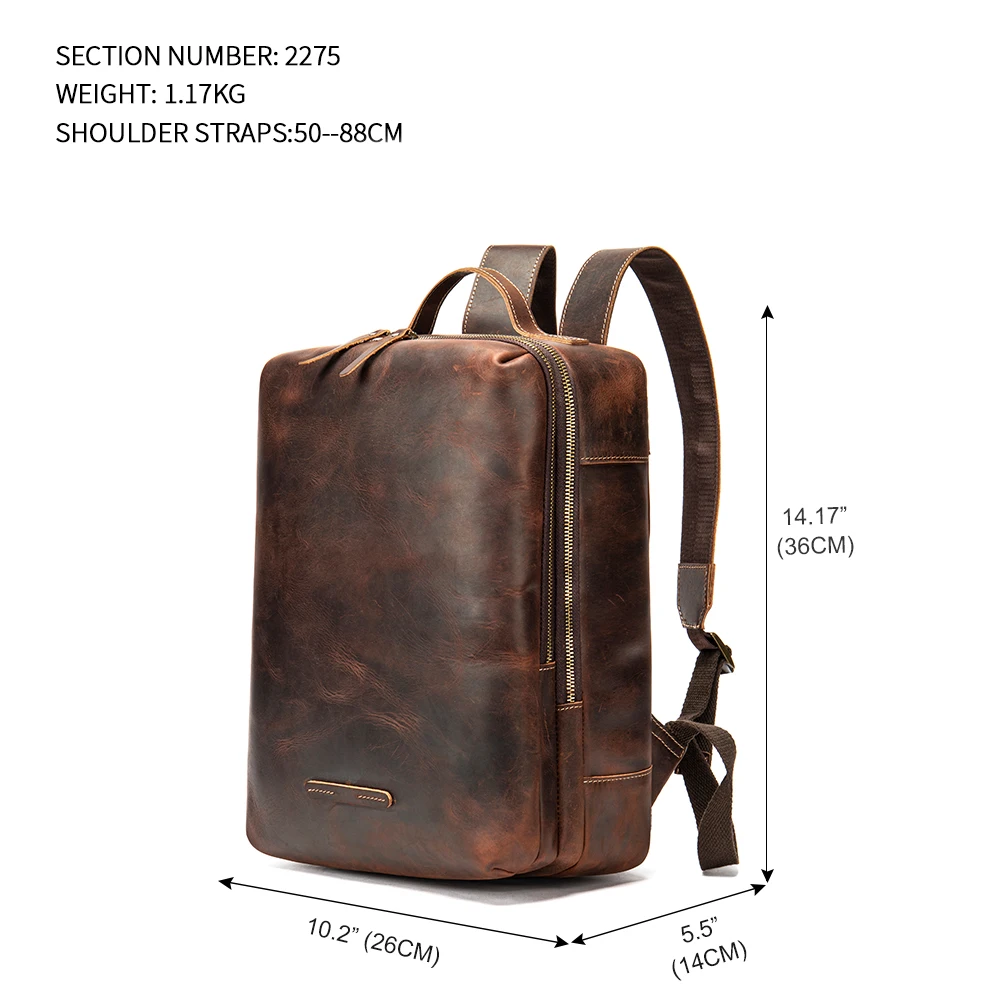
For daily commutes or work travel, our leather laptop backpacks are designed to hold devices securely against your back for optimal weight distribution.
Fine-Tuning Your Pack: Essential Balancing Strategies
Beyond the basic zones, these advanced techniques help fine-tune your pack’s comfort and stability:
Side-to-side balance: Ensure weight is distributed evenly between the left and right sides of your pack. Uneven loading causes your body to compensate by leaning, leading to muscle fatigue.
Use compression systems effectively: Tighten compression straps after packing to secure items close to your back and prevent shifting during movement.
Fill voids to prevent load shifting: Use soft items like clothing to fill empty spaces between heavier objects, creating a solid, immobile core.
Consider waterproofing needs: Use pack liners or dry bags for protection, but arrange them to maintain proper weight distribution.
Limit external attachments: Items hanging outside create a pendulum effect and throw off balance. Keep external items small and secure them tightly.
Mind your weight limits: As a general rule, your fully loaded pack shouldn’t exceed 20-25% of your body weight for comfortable carrying.
Testing your pack before a long journey is essential. Put it on and walk around, bend forward, and make adjustments until it feels stable and comfortable against your back.
Our carry-on leather backpacks are specifically sized to encourage proper weight distribution within airline carry-on limitations.
14 Inch Leather Laptop Backpack, Brown Leather Backpack, Men's Leather Backpack, Vintage Leather Backpack
Price range: $177.28 through $199.12 Select options This product has multiple variants. The options may be chosen on the product pageCarry On Leather Backpack, Roll Top Leather Backpack
Price range: $77.76 through $96.48 Select options This product has multiple variants. The options may be chosen on the product pageDesigner Men's Backpack, Men's Leather Laptop Backpack, Men's Leather Work Backpack
Price range: $158.04 through $160.04 Select options This product has multiple variants. The options may be chosen on the product page15 Inch Leather Laptop Backpack, Leather Briefcase Backpack
$332.96 Select options This product has multiple variants. The options may be chosen on the product page17 Inch Leather Laptop Backpack, Men's Leather Travel Backpack, Men's Leather Work Backpack
Price range: $106.28 through $143.88 Select options This product has multiple variants. The options may be chosen on the product pageFull Grain Leather Backpack, Men's Leather Laptop Backpack, Men's Leather Work Backpack
$353.46 Select options This product has multiple variants. The options may be chosen on the product page
Common Packing Mistakes and How to Avoid Them
Even experienced backpackers sometimes make these common weight distribution errors. Recognizing and correcting them can significantly improve comfort and stability:
Bottom-Loading Heavy Items
Problem: Creates a sagging sensation and pulls away from your back
Solution: Move heavy items up to the core zone against your back
Top-Loading Heavy Items
Problem: Causes tipping, throws off balance, and increases shoulder strain
Solution: Shift weight down to the core zone between shoulder blades and hips
Uneven Side-to-Side Distribution
Problem: Forces your body to compensate by leaning, causing muscle fatigue
Solution: Redistribute items to balance left-to-right weight
Neglecting Compression
Problem: Allows contents to shift during movement, creating instability
Solution: Use compression straps to secure load tightly against your back
External Attachment Overuse
Problem: Creates a pendulum effect and catches on obstacles
Solution: Minimize external items and keep them small and tightly secured
Overloading Beyond Capacity
Problem: No amount of proper packing can fix a fundamentally overloaded pack
Solution: Reduce total weight or switch to a larger pack with better support
Avoiding these common errors will significantly improve comfort on long journeys.
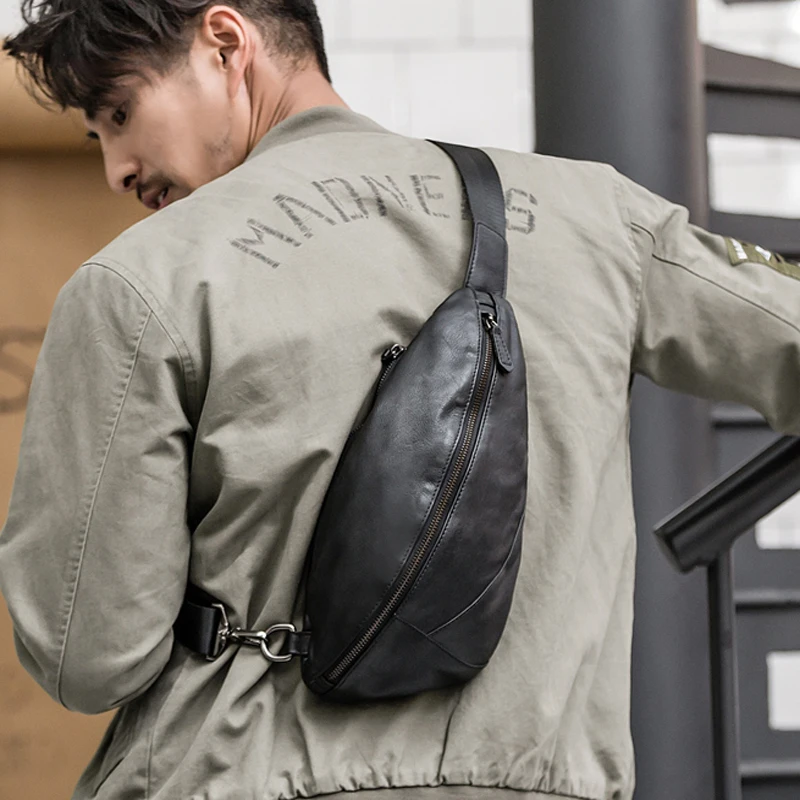
Choosing the right size backpack is crucial for proper packing. Our guide on backpack capacity selection can help you determine whether a 40L or 50L pack better suits your needs.
Specialty Backpack Considerations for Premium Leather Bags
Premium leather backpacks require special weight distribution considerations to maintain both comfort and the integrity of the material:
When packing a leather backpack, follow all the same core principles for weight distribution, but also consider these material-specific guidelines:
- Use protective sleeves for electronics to prevent damage to both your devices and the leather interior
- Avoid placing overly pointed or sharp items directly against leather walls
- Take advantage of internal organization features common in premium bags to secure items in their optimal positions
- Distribute weight evenly to maintain the bag’s intended shape and prevent stretching
- Balance your packing to prevent undue stress on leather seams and straps
These considerations help ensure your premium leather backpack retains its beauty while providing maximum comfort. The natural structure of full-grain leather backpacks actually complements proper weight distribution when packed correctly.
Key Takeaways for Perfect Backpack Weight Distribution
Mastering backpack weight distribution comes down to these essential principles:
- Position heavy items in the middle of your pack, against your back, between shoulder blades and hips
- Create a stable foundation with lighter, bulky items at the bottom
- Place medium-weight, frequently used items at the top for accessibility
- Use external pockets strategically for quick-access items without creating imbalance
- Maintain side-to-side balance to prevent muscle strain and fatigue
- Use compression systems to prevent load shifting
- Adjust weight placement slightly based on terrain and activity
- Never overload your pack beyond a comfortable carrying weight
Proper packing makes a tremendous difference in comfort, reduces fatigue, and helps prevent injury. By following these guidelines, even a heavily loaded backpack can feel balanced and manageable over long distances.
The time spent organizing your pack is always worthwhile—your back, shoulders, and hips will thank you at the end of the day.

